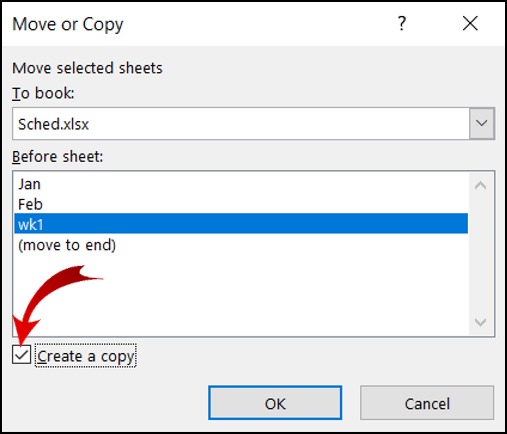Effortlessly Duplicate Excel Sheet Data with These Simple Steps

Duplicating an Excel sheet or parts of it can be incredibly useful in various scenarios, whether you need a backup for data verification, want to perform different analyses on the same dataset, or simply need to share a copy of your work with others. Microsoft Excel provides multiple ways to achieve this task, from using built-in tools to employing keyboard shortcuts or VBA macros. In this detailed guide, we will explore several methods to duplicate Excel sheet data, ensuring you can do so effortlessly.
Manual Copy and Paste

The most straightforward method to duplicate an Excel sheet or part of it is through manual copy and pasting. Here’s how:
- Select the cells or range you want to duplicate.
- Right-click and choose “Copy” or press Ctrl + C.
- Navigate to the destination sheet or area.
- Right-click where you want to paste and select “Paste” or press Ctrl + V.
- If you want to duplicate the entire sheet:
- Right-click on the sheet tab you want to copy.
- Select “Move or Copy.”
- In the dialog box, choose “(new book)” or an existing workbook from the dropdown menu.
- Check “Create a copy,” and click OK.
🔔 Note: When copying an entire sheet, remember that Excel formulas will update their references automatically if they refer to cells in the same workbook.
Using Excel’s Move or Copy Feature

Excel’s “Move or Copy” feature is designed for duplicating entire sheets:
- Right-click on the sheet tab.
- Click “Move or Copy.”
- Select where you want the copy to go.
- Make sure to check the box for “Create a copy.”
- Click “OK.”
⚙️ Note: This feature is especially handy for creating a quick backup or for transferring an entire sheet to another workbook without manually moving data.
Duplicate Using Keyboard Shortcuts

If you’re looking for an even quicker method, use these keyboard shortcuts:
- To duplicate an entire sheet:
- Select the sheet by holding Ctrl and clicking on the sheet tab.
- Press Ctrl + Drag the sheet tab to its new location.
- To duplicate data within a sheet:
- Select the data you want to copy.
- Press Ctrl + C to copy.
- Move to the new area and press Ctrl + V to paste.
💡 Note: Keyboard shortcuts can significantly speed up your workflow when you're duplicating data frequently.
Creating a Duplicate Sheet with VBA

For those who are comfortable with VBA, you can automate the process of duplicating sheets:
Here’s a simple VBA macro to copy a sheet:
Sub DuplicateSheet()
Dim ws As Worksheet
Set ws = ThisWorkbook.Sheets(“Sheet1”)
ws.Copy After:=ThisWorkbook.Sheets(ThisWorkbook.Sheets.Count)
End SubThis macro will:
- Copy "Sheet1" and place the duplicate after the last existing sheet in the workbook.
🔧 Note: Ensure you have "Microsoft Excel Objects" enabled in the VBA editor under Tools > References to use this script.
Duplication for Data Analysis

If your aim is to duplicate Excel data for analysis purposes, consider the following:
- Scenario Analysis: Duplicate data to perform what-if analysis without altering the original dataset.
- Data Comparison: Duplicate for side-by-side comparison or to check different scenarios or datasets.
- Backup: Always keep an unmodified version of your data as a backup before making extensive changes or deletions.
By duplicating sheets or data, you ensure that your original data remains untouched, allowing for reliable comparison and analysis.
Important Considerations

While duplicating data or sheets:
- Data Integrity: Ensure that any conditional formatting, data validation, or links are correctly transferred.
- File Size: Be mindful of the workbook’s size, especially when dealing with large datasets.
- Performance: Repeatedly duplicating sheets can slow down your workbook. Optimize where possible.
📈 Note: Large workbooks might benefit from using external references or Excel's Power Query feature for data management instead of duplication.
This comprehensive guide has covered various methods to duplicate Excel sheet data, each suited for different needs. Whether you prefer manual techniques, leverage Excel's built-in tools, or delve into automation with VBA, you're now equipped to handle data duplication with ease. Understanding these methods not only enhances productivity but also ensures data integrity and workflow efficiency. Moving forward, you can experiment with these techniques, choose what best fits your workflow, and perhaps even combine them for the ultimate Excel efficiency.
What is the quickest way to duplicate an entire Excel sheet?

+
Using keyboard shortcuts like Ctrl + Drag on the sheet tab to its new location is often the quickest method.
Can I automate the duplication process?

+
Yes, by using VBA macros, you can automate the duplication of sheets or specific data within Excel.
What should I do if I’m duplicating for data analysis?

+
Ensure you keep an unmodified copy as a backup, and use Excel’s analysis tools like filters, pivot tables, or even Power Query to compare and analyze the data.



